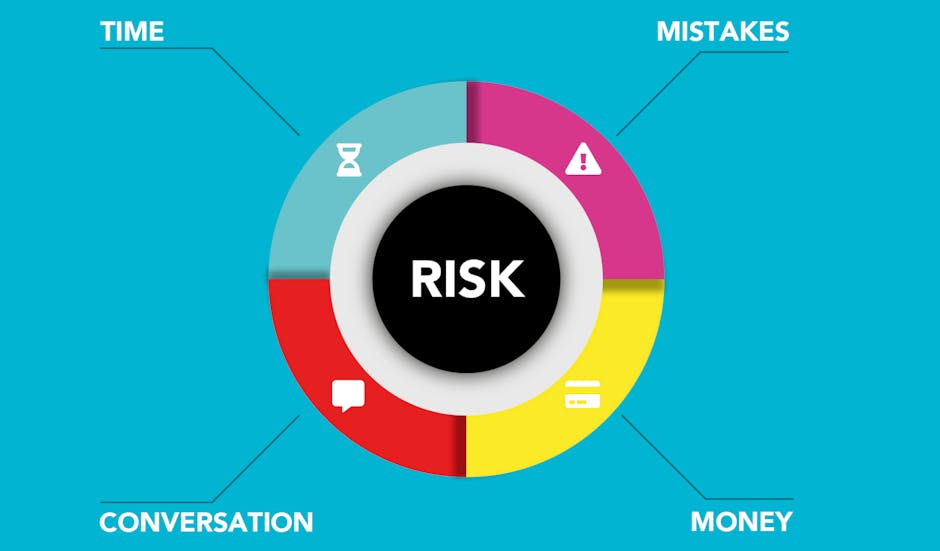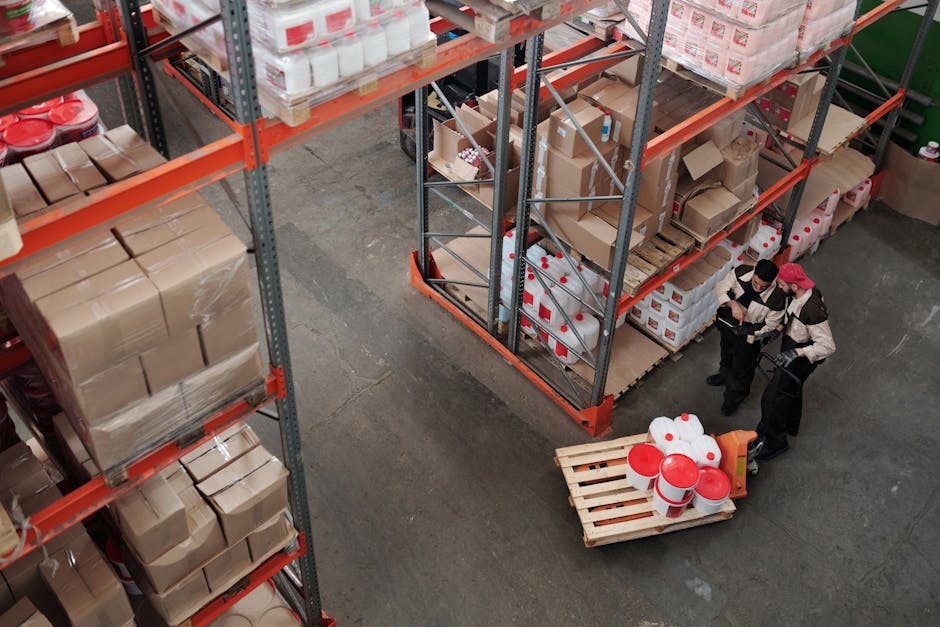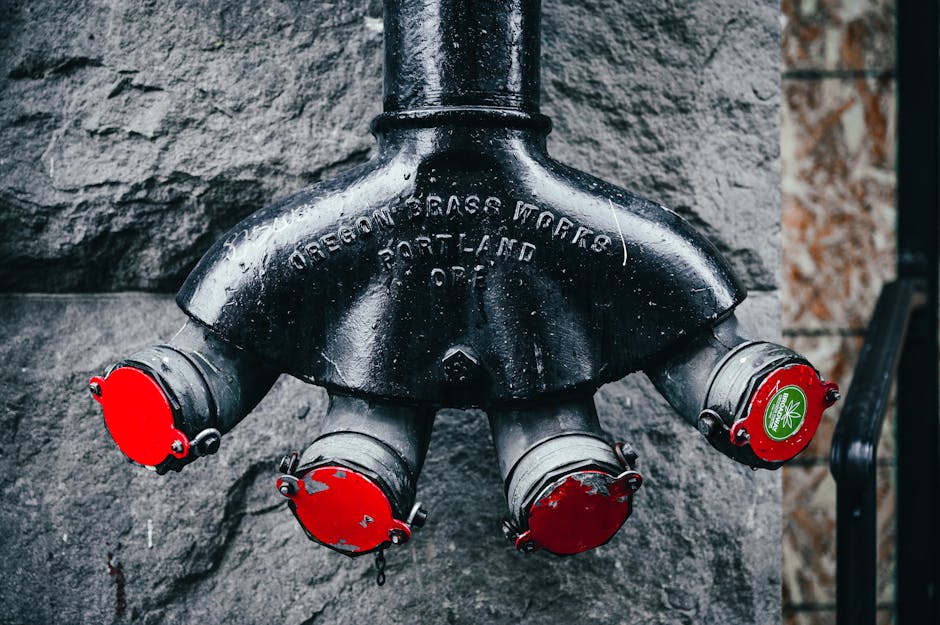Keep It Clean: Top Janitorial Services in Fayetteville, GA
The Business Boost of Cleanliness: Janitorial Services in Fayetteville, GA
12 min read
Alec Whitten Sep 21, 2024 7:47:45 AM

Facility risk management is essential for protecting the physical assets, safety, and efficiency of an organization. It involves identifying and addressing potential risks that could affect buildings, equipment, and the health of people inside.
Quick Answers: - Identify risks (natural, man-made, internal, external) - Regular inspections and audits - Create and implement a plan to handle risks - Continuous evaluation and adjustment
In any busy manufacturing plant or facility, safety comes first. Understanding and managing risks keeps your workers safe and ensures smooth operations. From extreme weather conditions to faulty equipment, potential hazards are always present. Being prepared helps you minimize downtime, avoid costly repairs, and maintain a safe work environment.
Why does it matter? A well-planned facility risk management strategy protects your business assets, saves money, and even safeguards your company's reputation. Ignoring risk management can lead to serious consequences such as injuries, operational disruption, and financial losses.

By following a clear and effective risk management process, you can ensure your facility runs smoothly and remains secure. The key to successful risk management is ongoing assessment and continuous improvement.
For more detailed information, visit our blog post on facility risk management.
Simple facility risk management word guide: - facilities management health and safety responsibilities - facility management and safety - facility safety management
Identifying facility risks is the first step in facility risk management. It involves spotting potential hazards that could impact your facility and its operations. This process includes looking at both internal and external risks, as well as natural and man-made threats.
Internal risks originate within the facility. These can include faulty equipment, poor lighting, or slippery floors. For example, a manufacturing plant might face risks from worn-out machinery or inadequate safety training for staff.
External risks come from outside the facility. These can be natural disasters like floods, earthquakes, or man-made issues such as vandalism or nearby industrial accidents.
Natural risks include events like hurricanes, tornadoes, and earthquakes. For instance, a facility located in a hurricane-prone area needs to consider the structural integrity of its buildings and have an evacuation plan in place.
Man-made risks are those caused by human actions, whether intentional or accidental. This can range from chemical spills to cyber-attacks on facility management systems.
Brainstorming sessions with staff can uncover potential risks that might not be immediately obvious. Employees often have knowledge of issues that can lead to problems.
Surveys and inspections are also valuable tools. Regularly surveying employees and conducting thorough inspections of the facility can help identify risks early.
Audits are formal examinations of your facility's processes and procedures. They provide a comprehensive overview of potential risks and areas for improvement.
Interviews with staff and stakeholders can give insights into risks that might not be visible during inspections or audits.
Checklists can ensure that no potential risk is overlooked. They provide a structured way to review all aspects of the facility.
Historical data can reveal patterns of past incidents. Reviewing this data helps predict and prevent future risks.
A case study from the Nonprofit Risk Management Center highlighted how regular preventative maintenance can prevent costly water damage. By identifying and addressing risks such as faulty plumbing or inadequate drainage, facilities can avoid significant repair costs and operational disruptions.
In summary, identifying facility risks is about being proactive. Use a combination of brainstorming, surveys, inspections, audits, interviews, checklists, and historical data to get a comprehensive view of potential hazards. By doing so, you can create a safer and more efficient facility.
For more detailed information, visit our blog post on facility risk management.
Once you've identified potential risks, the next step in facility risk management is to analyze and assess them. This involves understanding the likelihood of each risk occurring and its potential impact on your facility. Here's how you can do it effectively:
Qualitative methods involve descriptive analysis. This means using words and categories to describe the risks. For example, you might classify risks as "high," "medium," or "low" based on their potential impact and likelihood.
Quantitative methods use numbers and data to measure risks. This can involve statistical models or calculations to estimate the probability and impact of each risk. For example, you might calculate the expected financial loss from a risk event.
Impact refers to the consequences of a risk event. How severe would the damage be if the risk occurred? Would it cause minor disruptions, or could it lead to major operational downtime or financial loss?
Likelihood is the probability of the risk happening. Is it something that could occur frequently, or is it a rare event?
A risk matrix is a simple tool to visualize risks based on their impact and likelihood. It usually involves a grid where one axis represents impact (low to high) and the other represents likelihood (rare to frequent). By plotting risks on this matrix, you can easily see which ones need immediate attention.
Scoring systems assign numerical values to impact and likelihood. For example, you might rate impact on a scale from 1 to 5, and likelihood from 1 to 5. Multiplying these scores gives you a risk score, which helps prioritize risks.
Risk maps are visual tools that plot risks on a chart. They help you see the overall risk landscape of your facility. Risks with higher scores appear in areas that need more focus. This visualization aids in understanding where to allocate resources for risk mitigation.

A study by the ISSA showed that using a risk matrix helped a healthcare facility prioritize risks related to cleanliness and infection control. By focusing on high-impact, high-likelihood risks, they were able to implement more effective cleaning protocols and reduce infection rates.
In summary, analyzing and assessing risks helps you understand which risks are most critical and where to focus your efforts. Use qualitative and quantitative methods, risk matrices, scoring systems, and risk maps to get a clear picture of your facility's risk landscape. This ensures that you can manage risks proactively and keep your facility running smoothly.
For more detailed information, visit our blog post on facility risk management.
Once you've analyzed and assessed the risks, the next step in facility risk management is to develop strategies to mitigate them. This involves deciding how to treat each risk, whether to avoid, reduce, transfer, or retain it. Here’s a breakdown of these strategies and the types of controls you can use.
Avoid: The best way to handle a risk is to avoid it altogether. This might mean not engaging in certain activities that pose significant risks. For example, if a particular chemical is hazardous, you might choose not to use it in your facility.
Reduce: If you can’t avoid a risk, the next best option is to reduce its impact or likelihood. This could involve implementing safety measures or improving maintenance schedules. For example, regular inspections can identify and fix potential hazards before they become serious issues.
Transfer: Sometimes, it’s possible to transfer the risk to another party. This is often done through insurance or outsourcing certain activities. For instance, you might transfer the risk of fire damage by purchasing fire insurance.
Retain: In some cases, you might decide to accept the risk. This is usually done when the cost of mitigating the risk is higher than the potential impact. However, it’s essential to have a plan in place to manage the consequences if the risk materializes.
To effectively mitigate risks, you can use a combination of administrative, management, and engineering controls.
Administrative controls focus on day-to-day processes. These might include:
For example, the ISSA provides guidelines on cleaning standards that can help maintain a safe and healthy environment in your facility.
Management controls are more about oversight and planning. These might include:
By keeping a detailed risk register and having regular reviews, you can ensure that risks are continuously monitored and managed.
Engineering controls involve technical solutions to manage risks. These might include:
For example, improved monitoring systems can detect equipment malfunctions early, preventing larger issues down the line.
A manufacturing facility implemented a combination of administrative, management, and engineering controls to manage their risks. They conducted regular inspections and preventive maintenance, kept a detailed risk register, and installed advanced monitoring systems. This comprehensive approach reduced equipment failures by 30% and improved overall safety.
By using these strategies and controls, you can effectively mitigate risks in your facility. Whether you choose to avoid, reduce, transfer, or retain risks, having a clear plan in place ensures that you can handle potential issues proactively.
For more detailed information, visit our blog post on facility risk management.
Once you have developed your risk mitigation strategies, the next crucial step in facility risk management is implementing the plan. This involves executing the plan, assigning roles and responsibilities, ensuring clear communication, allocating resources, and continuously monitoring and reviewing the outcomes.
Executing the risk management plan means putting your strategies into action. This includes:
Assigning clear roles and responsibilities is key to effective risk management. Everyone in the organization should know their part in maintaining safety. This includes:
Effective communication ensures everyone is on the same page. This involves:
Allocating the right resources is essential for the success of your risk management plan. This includes:
Continuous monitoring and review are critical to ensure the effectiveness of your risk management plan. This involves:

Example: A well-known case is Sumitomo Electric, which developed business continuity plans to ensure core business activities could continue during disasters. They learned from the Great East Japan earthquake and continuously improved their plans through practical drills and training programs.
By following these steps, you can ensure that your facility risk management plan is effectively implemented and continuously improved. For more detailed information, visit our blog post on facility risk management.
Reviewing and updating your facility risk management plan is essential to ensure its effectiveness and relevance. This step involves continuously evaluating the plan, identifying gaps and weaknesses, and adapting to various changes within and outside the organization.
Regular evaluation of the risk management plan helps you assess its effectiveness. This involves:
No plan is perfect. Identifying gaps and weaknesses allows you to strengthen your risk management efforts. This includes:
Organizational changes can introduce new risks or alter existing ones. It’s important to:
Compliance with laws and regulations is non-negotiable. Stay updated on regulatory changes by:
Technology evolves rapidly, and so do the risks associated with it. To stay ahead:
New risks can emerge due to various factors, such as changes in the environment or industry trends. To manage emerging risks:
Example: Consider the case of Sumitomo Electric, which continuously improved its business continuity plans after the Great East Japan earthquake. By conducting practical drills and training programs, they ensured their plans remained effective and relevant.
By regularly reviewing and updating your facility risk management plan, you can ensure that it remains robust and effective in protecting your organization. For more insights, visit our blog post on facility risk management.
To ensure the safety and efficiency of your facility, it's crucial to follow best practices in facility risk management. Here are some key strategies:
Regular maintenance can prevent many issues before they become serious problems. For example, neglecting routine maintenance can lead to water damage, which is costly and disruptive. By scheduling regular checks on critical systems like HVAC, plumbing, and electrical, you can catch problems early.
Conducting regular inspections helps identify potential hazards that could cause injuries or damage. For instance, slips and falls are common but preventable with proper inspection and maintenance of floors, lighting, and walkways.
Staying compliant with local, state, and federal laws is non-negotiable. Regulatory bodies like OSHA provide guidelines that help ensure the safety of your facility and its occupants.
Proper training ensures that staff know how to handle emergencies and follow safety protocols. Untrained staff are more likely to suffer injuries or cause accidents.
Being prepared for emergencies can significantly reduce the impact of unexpected events. Develop an emergency preparedness plan that includes evacuation procedures, emergency contacts, and recovery strategies.
By integrating these best practices into your facility risk management plan, you can create a safer, more efficient environment for everyone. For more detailed guidance, check out our blog post on facility risk management.
A comprehensive facility risk management plan includes several essential components:
Risk Identification: Determine potential hazards that could affect your facility. This includes internal risks like equipment failure and external risks like natural disasters.
Risk Assessment: Analyze the identified risks to understand their potential impact and likelihood. Use tools like risk matrices and scoring systems to prioritize them.
Risk Mitigation Strategies: Develop strategies to manage risks, such as avoiding, reducing, transferring, or retaining them.
Implementation Plan: Outline the steps, roles, and responsibilities for executing the risk management strategies.
Monitoring and Review: Continuously monitor the effectiveness of your risk management plan and update it as needed.
For more details, see our blog post on facility risk management.
A facility risk management plan should be updated regularly to remain effective. Consider the following triggers for updates:
Organizational Changes: Any changes in your organization, such as new processes or expansion, should prompt a review of your risk management plan.
Regulatory Changes: Stay compliant by updating your plan to reflect new laws and regulations.
Technological Changes: Incorporate new technologies that could introduce new risks or mitigate existing ones.
Emerging Risks: Regularly assess for new risks that could impact your facility, such as cybersecurity threats.
At a minimum, conduct a thorough review annually to ensure the plan remains relevant and effective.
Utilizing a cloud-based Facility Management (FM) system offers several advantages:
Improved Security: Cloud-based systems often provide better security measures to protect sensitive data. For example, they can segregate customer data from contractor access, reducing the risk of data breaches.
Improved Collaboration: These systems enable seamless collaboration between internal teams and external contractors, facilitating efficient communication and task management.
Cost Savings: By automating routine tasks and optimizing resource allocation, cloud-based systems can help reduce operational costs.
Real-Time Monitoring: Access to real-time data allows for better decision-making and quicker response to issues.
Scalability: Easily scale your operations up or down based on your current needs without significant investments in new infrastructure.
For more information, visit our blog post on facility risk management.
Facility risk management is crucial for maintaining safe, compliant, and efficient operations. At Millennium Facility Services, we understand the unique challenges that various industries face. That's why we offer customized cleaning programs custom to meet the specific needs of businesses in Georgia, including film & TV, manufacturing/industrial, medical, and commercial sectors.
Our Millennium SafeGuard Process™ ensures that your facility is not only clean but also safe and compliant with industry standards. This process is fast, efficient, scalable, and proven to deliver the highest level of safety and cleanliness. By implementing our SafeGuard Process™, we help you create a safer, more productive workplace, reducing accidents and improving overall employee satisfaction.
Compliance with ISSA cleaning standards is a cornerstone of our approach. These globally recognized standards ensure that our cleaning practices meet the highest levels of safety and effectiveness. By adhering to ISSA guidelines, we guarantee that your facility is maintained to the highest standards, protecting both your employees and visitors.
In addition to our rigorous cleaning protocols, we also focus on preventative maintenance and regular inspections. These practices are essential for identifying potential risks before they become significant issues. Our teams are trained to spot and address hazards, ensuring that your facility remains safe and operational.
For more insights on facility risk management and how our services can benefit your business, check out our detailed blog post on facility risk management.
By partnering with Millennium Facility Services, you're choosing a trusted leader in facilities maintenance. Our commitment to safety, compliance, and excellence ensures that your facility remains a welcoming and secure environment for everyone.
Learn more about the Millennium SafeGuard Process™ and how it can benefit your facility.
This section is designed to provide a concise and informative conclusion to the article, highlighting the benefits of Millennium Facility Services and encouraging the reader to learn more about their offerings.

The Business Boost of Cleanliness: Janitorial Services in Fayetteville, GA

Understanding Facility Management and Safety

Carpet cleaning Fayetteville is a crucial service for maintaining clean and healthy environments, especially in busy facilities and manufacturing...